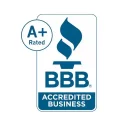by Tim O’Hare
Follow O’Hare and Koch Law Firm on Facebook, Twitter, LinkedIn & Google+.
If you are shopping for a new or used car, you may be overwhelmed with the options available and the wide range of prices. While many things are negotiable when buying a vehicle, there is one non-negotiable: safety.
Keeping yourself and your family safe on the road should be your top priority, but how do you know what safety features to look for? To help guide you in your decision, here are a few things to look for.
- Adjustable upper seat belts. If the upper shoulder belt is adjustable, you may position the belt to accommodate the individual’s size. This feature also makes the seat belt more comfortable.
- Rear center seat shoulder belts. In many vehicles, the rear center seat only has a lap belt, but a lap/shoulder belt combo is the safest, especially for older children and children riding in booster seats.
- Air bags. Most vehicles today are equipped with front air bags. Many also come with side airbags, and even curtain bags. Although air bags should never replace the use of a seat belt, they can help prevent injury if you are involved in an accident. Remember: children can be seriously injured or even killed by an airbag, so children under 12 should always ride in the back seat. Never use a rear-facing child seat in the front seat of a vehicle with a front passenger air bag unless the airbag is turned off.
- Head restraints. The head restraints (headrests) are intended to limit head movement during an accident and help reduce risk of neck injury. Head restraints are required on all front seats, but are not required on rear seats. Look for a vehicle with head restraints on all seats to provide maximum safety to all passengers.
- Antilock brakes. The ABS prevents the car’s wheels from locking up during sudden braking, allowing the driver to maintain better control of the vehicle. Some SUVs, trucks, and vans may only have two-wheel ABS, while all passenger cars with ABS have four-wheel ABS. Some vehicles also come with brake assist, which can help the driver more quickly reach the braking force needed to activate ABS.
- Traction control. This feature improves stability of the vehicle by automatically adjusting engine power output and may even apply brakes on selected wheels to help maintain control if the vehicle begins to slip. Electronic stability control (ESC) is advanced traction control that uses a computer linked to sensors to help maintain control of the vehicle by applying brakes to one or more wheels and reducing engine power if necessary to keep the vehicle on course. Note: This feature may have a different name depending on the vehicle manufacturer.
- Accident avoidance systems. Brake assist, forward-collision warning, adaptive cruise control, blind spot warning, lane departure warning, pedestrian detection, active head restraints, and backup sensors or cameras are additional features that can help prevent an accident.
- Tire pressure monitors. Keeping your tires properly inflated is important both for safety and fuel economy. Underinflated tires can lead to a blowout, which can be extremely dangerous. By government regulation, all vehicles made after Oct. 31, 2006 are to have a low-tire-pressure warning system, but if you are shopping for a used vehicle this is an important safety feature to look for.
- Recalls. Before making your final purchase (particularly when purchasing a used vehicle), check for any recalls that may be out on the vehicle you are considering. For a full list of motor vehicle recall information, visit www.recalls.gov.
For more information on what safety features to look for when shopping for a car, click here.
If you have been seriously injured or lost a family member in a car accident, contact O’Hare and Koch Law Firm to speak with a Dallas personal injury attorney.
Call O’Hare and Koch Law Firm for your FREE Case Evaluation
972-960-0000 or Toll-Free 888-960-0020










